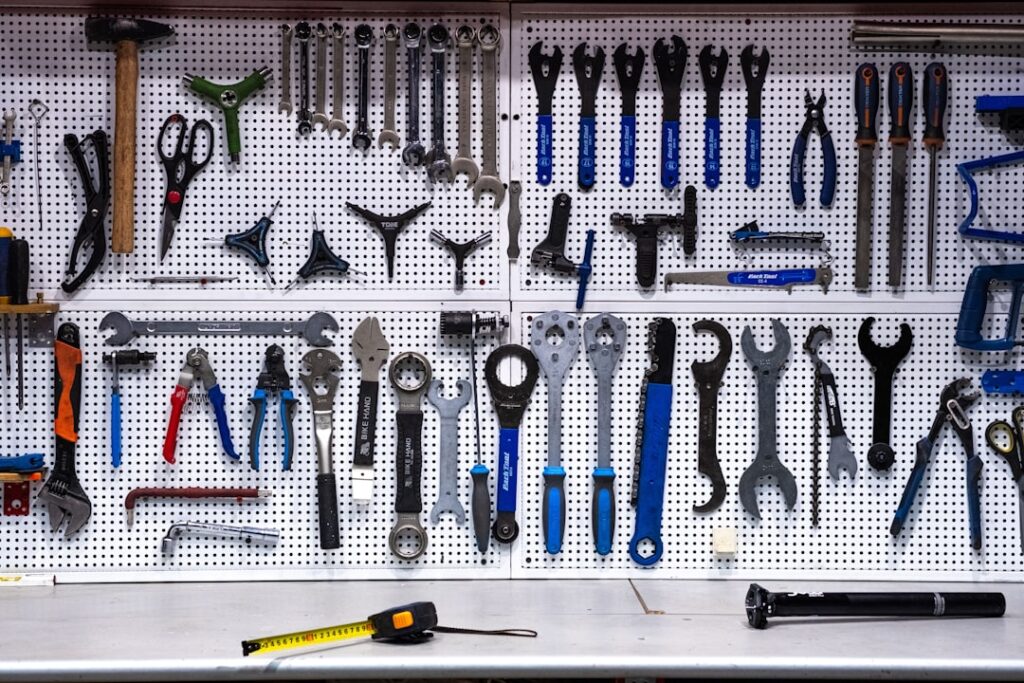Discover a step-by-step guide to improving operational efficiency using AI-driven solutions, explore key benefits, and learn effective techniques for sustainable growth and a competitive edge.
Introduction
In today’s fast-paced business world, operational efficiency is crucial for sustainable growth and maintaining a competitive edge. But how can companies streamline their processes, reduce waste, and boost productivity without sacrificing quality? The answer lies in leveraging AI-driven Operational Efficiency Tools. This guide will walk you through practical steps and effective techniques to enhance your operations using artificial intelligence.
What is Operational Efficiency?
Operational efficiency measures how well a company uses its resources to produce goods or services. It’s about doing more with less—minimizing waste, optimizing processes, and ensuring that every part of your operation runs smoothly.
Key Components:
- Process Optimization
- Resource Allocation
- Waste Reduction
- Quality Management
- Technology Integration
Understanding these components is the first step toward creating a lean, agile business model that drives growth and profitability.
The Importance of Operational Efficiency
Improving operational efficiency isn’t just about cutting costs. It’s a strategic move that impacts every aspect of your business:
- Cost Reduction: Streamlining processes can significantly lower operating expenses.
- Enhanced Customer Satisfaction: Faster delivery and higher quality services boost customer experiences.
- Increased Competitiveness: Efficient companies adapt quickly to market changes and innovate effectively.
- Sustainability: Efficient operations consume fewer resources, aligning with eco-friendly practices.
- Employee Productivity: Well-designed processes reduce frustration and increase job satisfaction.
Ultimately, operational efficiency lays the foundation for long-term success and resilience.
Steps to Improve Operational Efficiency
1. Conduct a Comprehensive Audit
Start by assessing your current operations. Identify bottlenecks and areas of waste using tools like process mapping. This will highlight improvement opportunities.
2. Set Clear, Measurable Goals
Establish SMART goals—Specific, Measurable, Achievable, Relevant, Time-bound—for your efficiency improvements, such as reducing production time or lowering operational costs.
3. Embrace Process Automation
Automate repetitive tasks to reduce errors and speed up processes. For example, iMaintain Brain, our AI-powered solutions generator, can automate data analysis and reporting, freeing up your team to focus on higher-value activities.
4. Optimize Resource Allocation
Ensure your resources—human, financial, and material—are used effectively. Tools like Asset Hub provide real-time visibility into asset status and maintenance schedules, optimizing resource use.
5. Implement Lean Methodologies
Adopt lean principles to eliminate waste and improve efficiency. Techniques like Kaizen promote continuous improvement and help streamline workflows.
6. Invest in Employee Training and Development
Well-trained employees are more efficient and adaptable. iMaintain’s Manager Portal allows managers to oversee scheduling and workload distribution, ensuring your team is always performing at its best.
7. Leverage Data Analytics
Use data-driven insights to make informed decisions. Our AI Insights feature offers real-time analytics tailored to your operations, identifying areas for improvement before they become critical issues.
8. Enhance Communication and Collaboration
Improve information flow with collaborative tools. Clear communication channels foster teamwork and break down departmental silos, enhancing overall efficiency.
9. Regularly Review and Refine Processes
Operational efficiency requires ongoing effort. Conduct periodic audits and encourage feedback to maintain and improve your processes continuously.
10. Foster a Culture of Efficiency
Create a company culture that values and rewards efficiency. Encourage employees to suggest and implement efficiency-enhancing ideas, and lead by example with management actively participating in initiatives.
Techniques and Tools for Improving Operational Efficiency
AI-Driven Solutions
AI tools like iMaintain Brain offer unparalleled insights, helping to predict maintenance needs and prevent downtime. This ensures your operations run smoothly without unexpected interruptions.
Robotic Process Automation (RPA)
Automate mundane tasks with RPA tools to reduce human error and increase speed. This allows your team to focus on more strategic activities.
Project Management Software
Platforms such as Asana or Microsoft Project streamline workflows and enhance collaboration, making project management more efficient.
Business Intelligence (BI) Tools
Tools like Tableau or PowerBI provide data visualization and analytics, enabling you to make informed, data-driven decisions.
Internet of Things (IoT) Devices
IoT sensors offer real-time data collection and process monitoring, which can be integrated with iMaintain’s Asset Hub for comprehensive asset management.
Real-World Examples and Case Studies
Manufacturing: Toyota Production System
Toyota excels in operational efficiency through lean manufacturing principles and continuous improvement. This has resulted in reduced costs and high-quality standards.
E-Commerce: Amazon’s Fulfillment Centers
Amazon uses advanced robotics and AI-driven inventory management to streamline their fulfillment centers, significantly cutting processing times and costs.
Healthcare: Virginia Mason Medical Center
By adapting lean principles, Virginia Mason reduced patient waiting times and costs while improving safety and care quality.
Technology: Google’s Data Center Efficiency
Google has optimized its data centers with AI-powered management and advanced cooling systems, drastically reducing energy consumption and operational costs.
These examples show that operational efficiency can drive success across various industries by committing to continuous improvement and leveraging the right technologies.
Challenges with Improving Operational Efficiency
Resistance to Change
Employees might fear job loss or disruption. Solution: Communicate benefits clearly, involve employees in the process, and provide comprehensive training.
Resource Limitations
Improving efficiency requires time and money. Solution: Prioritize initiatives based on impact and consider phased implementations.
Data Quality and Accessibility
Poor data can hinder efficiency efforts. Solution: Invest in data cleansing, implement robust data governance, and use centralized data systems like Asset Hub.
Balancing Short-Term and Long-Term Goals
Immediate results might clash with long-term sustainability. Solution: Set both short-term and long-term goals and celebrate early wins while maintaining the bigger picture.
Technology Integration
Integrating new tech can be complex. Solution: Develop a clear integration roadmap and provide thorough training, utilizing tools like iMaintain’s Manager Portal for seamless transitions.
The Future of Operational Efficiency
Artificial Intelligence and Machine Learning
AI and ML will continue to revolutionize operational efficiency with predictive maintenance and intelligent process automation.
Internet of Things (IoT) and Edge Computing
Real-time monitoring and faster decision-making through edge computing will enhance efficiency further.
5G and Enhanced Connectivity
Improved connectivity will support remote operations and smart factories, increasing operational capabilities.
Blockchain for Supply Chain Efficiency
Blockchain can enhance transparency and streamline supply chain operations through smart contracts.
Augmented and Virtual Reality
AR and VR will provide immersive training environments and remote assistance, boosting efficiency in maintenance and repairs.
Sustainability-Driven Efficiency
Operational efficiency will increasingly align with sustainability goals, incorporating circular economy practices and smart energy management systems.
Staying ahead with these emerging technologies will ensure your business remains efficient, sustainable, and competitive.
Wrap Up
Improving operational efficiency is an ongoing journey that can transform your business. Here are the key takeaways:
- Holistic Approach: Optimize every aspect of your business to create more value.
- Technology as an Enabler: Utilize AI and other emerging technologies to enhance efficiency.
- Culture of Continuous Improvement: Foster a mindset of ongoing optimization.
- Data-Driven Decision Making: Use analytics to guide your efficiency initiatives.
- Balance Efficiency with Quality: Maintain high standards while striving for efficiency.
- Adaptability is Key: Evolve your strategies to keep up with changing business landscapes.
Ready to take your operational efficiency to the next level? Request a demo today and discover how iMaintain can help you achieve sustainable growth and a competitive edge.
FAQ
What is AI Maintenance?
AI Maintenance leverages artificial intelligence to predict and prevent equipment failures, reducing downtime and maintenance costs.
How does Predictive Maintenance work?
Predictive Maintenance uses data analytics and AI to forecast when equipment maintenance is needed, preventing unexpected breakdowns.
What are Operational Efficiency Tools?
Operational Efficiency Tools are technologies and methodologies that help businesses streamline processes, reduce waste, and optimize resource use.
How can Workforce Management improve efficiency?
Workforce Management tools help allocate resources effectively, manage schedules, and enhance employee productivity.
By following this guide and integrating AI-driven tools like iMaintain Brain and Asset Hub, you can significantly boost your operational efficiency, ensuring your business thrives in today’s competitive environment.






